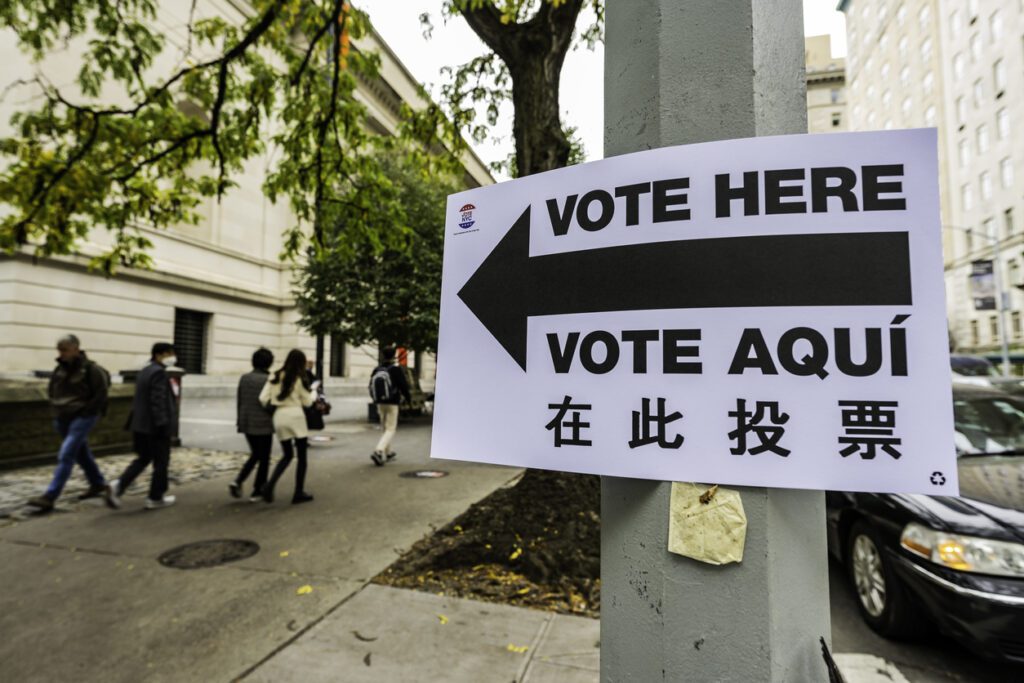4 Things That Were Changed (Forever) By 2022

Image Credit: Christine McCann
At C&E, we’re committed to telling the stories of practitioners while highlighting the tools and tactics that make a difference on campaigns and in the advocacy space. Most of the time, that means we’re looking ahead to what will shape the outcome of future races.
But now that the sun has set on 2022, we wanted to highlight some of the things that were changed, possibly forever, by what’s been a challenging year for so many. Here they are:
Election Day
It wasn’t so long ago that people were floating the idea of making Election Day a national or state-level holiday. That talk has died down as the day itself has been stretched into weeks of early voting, and pushed further to the background since the pandemic by the rise of mail-in balloting.
In fact, it’s the increase in mail-in voting, except in Georgia, that is making it harder and harder to determine the winner on Election Day.
With that in mind, campaigns have begun preparing their staff to work past “the first Tuesday following the first Monday in November,” and into that period of uncertainty where a winner might not be known. That’s adding to existing concerns about staff burn out, but also draining some of the excitement out of the whole experience. Why even have an Election Night party? American Democracy is evolving, and adding new dimensions to the idea of the permanent campaign.
Digital’s Epic Rise
There was a time when digital consultants felt it was, well, just a matter of time before they took their rightful place at the head of the campaign strategy table. Remember Brad Parscale’s appointment as campaign manager for President Trump’s reelect? Digital was going to be in charge. Since 2020, that inevitability has appeared far less certain. Sure, digital spending is still increasing — as platform companies’ stock prices are plummeting — but look at how much money went to broadcast in 2022: Pre-election projections had it hitting just under $5 billion, the biggest advertising category by far. And the reason for that is clear: it still works.
“Broadcast television builds the most reach, quickly, and there’s nothing that comes close to it,” said Hadassa Gerber, chief research officer at TVB, a trade association representing America’s local broadcast television industry.
Gerber’s group recently released a study that had 41 percent of voters saying broadcast TV was motivating them to get out and vote. Cable TV was second at 27 percent, followed by social media at 24 percent.
“People just write off that television can’t reach young adults (18-34 year olds), but 78 percent [of those voters] saw an ad on TV for a candidate or ballot issue,” Gerber told C&E. “They also trust it.”
She added: “Are they [campaigns] using the other platforms? Yeah they are. But nothing has the reach of television.”
Political Fashion
Many consultants pride themselves on their own fashion sense, but we’re not talking about who’s wearing what to the office. It’s clear from 2022 that campaign attire on the trail for candidates is not what previous generations wore. Yes, dressing down was always something even presidential candidates tried to do, but a barn jacket is not a hoodie.
From John Fetterman in Pennsylvania to John James in Michigan, candidates have clearly gotten a message about authenticity, and for many that means no suits until after Election Day. We’re waiting for the 2024 Republican presidential candidate to make the obvious choice and opt for the fleece-vest-collared-shirt combination on the debate stage.
A Sense Of Personal Security For Candidates
We’re now living in a time when officeholders from both sides routinely speak publicly about the threats to their safety that they receive in the course of their work. To wit, this midterm cycle was the first since an FEC ruling allowed for federal officeholders to use campaign funds to pay for private security, a.k.a. bodyguards.
That ruling may have been prompted by the Jan. 6th riot at the Capitol, but the environment isn’t getting any better even as some rioters face lengthy prison sentences.
Here’s one barometer: A search of FEC disbursements that were tagged with either “security” or “personal security” returned 4,277 results for 2021-2022 — up from 2,501 in the previous midterm cycle of 2017-2018. Cyber security is part of this, to be sure, but the larger concern for now is physical security for officeholders and their staff. Given the current state of political rhetoric, and the environmental conditions going into the 2024 presidential, security as an expense is only going to increase for campaigns.
